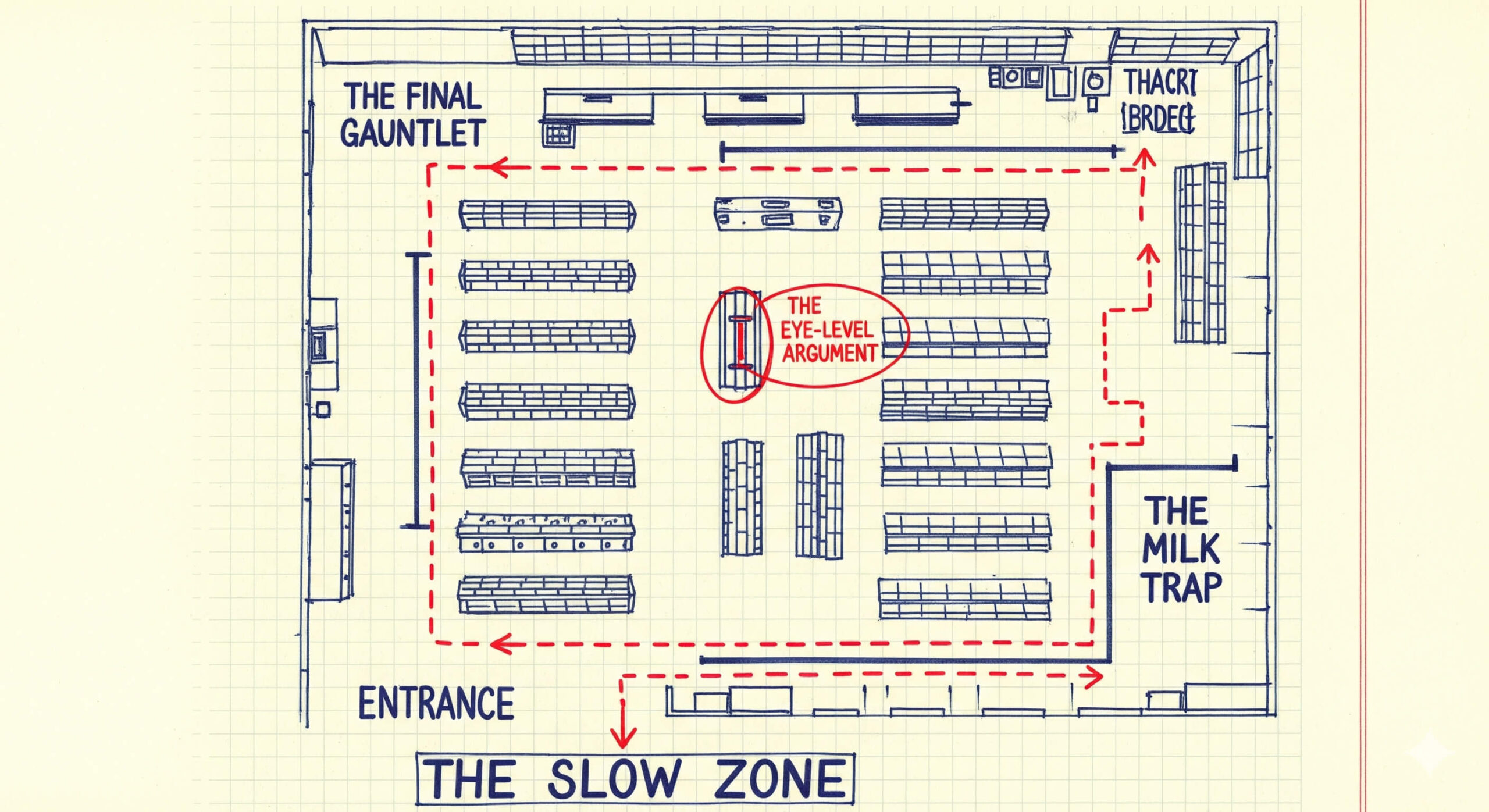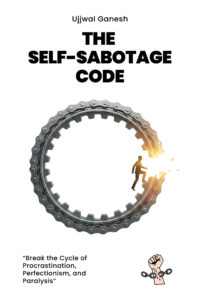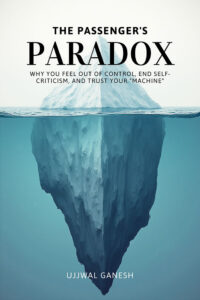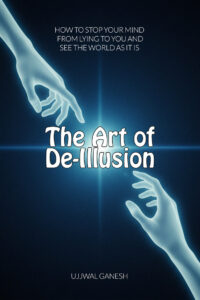Have you ever had the feeling you’re on autopilot?
Maybe it happened this morning. You drove your usual route to the office, navigating turns, stopping at lights, and pulling into your regular parking spot. You arrived safely, but then a strange feeling washed over you: you couldn’t remember the last ten minutes of the drive. You were physically present, your hands on the wheel, but your mind was somewhere else entirely—replaying a conversation from yesterday, stressing about an upcoming deadline, or planning your weekend.
Your body was there, but “you” were missing.
This isn’t a memory lapse or a sign of carelessness. It’s a glimpse behind the curtain of your consciousness, revealing a powerful and ancient system that runs your life. It’s a system that, for the sake of efficiency, is actively hiding the vast, vibrant, and detailed reality of your life from you. And it does so with ruthless precision.
This isn’t just a poetic idea. It’s a neurological heist happening inside your head every single second. And once you understand how it works, you can begin to reclaim the 99% of your life you never knew you were missing.
The 11-Million Bit Problem
Let’s start with a staggering, scientifically established fact. Every second you are alive, your five senses are taking in a torrent of information from the world around you—somewhere in the ballpark of 11 million bits of data.
Think about what that includes right now. The precise temperature of the air on your skin. The faint, ambient hum of the electronics in the room. The exact shade of color on the wall in front of you. The subtle tension in your shoulders. The rhythm of your own breathing. It’s all there. A rich, high-definition stream of reality.
But here’s the catch. The part of your mind you think of as your conscious self—the part that is reading and understanding these words—can only process about 50 bits per second.
Fifty. Out of eleven million.
That isn’t a typo. Your conscious mind is experiencing less than 0.001% of the reality your body is taking in. So what happens to the other 10,999,950 bits of information?
They’re handled by a bouncer at the velvet rope of your consciousness. As I explain in my book, The Observation Effect, this bouncer is an ancient, ruthlessly efficient curator that decides what gets into the VIP lounge of your awareness. Its primary job isn’t to make your life beautiful, meaningful, or interesting. Its job is to keep you alive by using shortcuts.
And its favorite shortcut is to ignore anything new or detailed and instead show you the same predictable patterns it has shown you a thousand times before.
Meet the Ghost in Your Head
Neuroscientists have a name for this master storyteller, this director of your inner world: the Default Mode Network (DMN). This network is a collection of brain regions that activates the moment you stop focusing on a specific, external task. When you’re driving that familiar route, sitting in a boring meeting, or washing the dishes, the DMN takes the wheel. It’s the ghost in your head.
The DMN is the biological engine of your identity. Its main job is to manage your internal world by constantly weaving a narrative about your life. It digs through your memories, scripts your future, and thinks about yourself. It’s the voice in your head that’s almost always concerned with the past (reliving regrets, replaying conversations) or the future (planning, worrying, fantasizing).
This ghost is essential. Without it, you couldn’t plan your day or maintain a stable sense of who you are. But its greatest strength is also its most profound weakness. When the DMN is left unchecked, we become characters lost in its story, completely blind to the present moment. We stop experiencing our lives directly and instead live within a mental simulation of our lives, one dominated by past regrets and future anxieties.
This is why so many of our days blur together into a featureless fog. The DMN’s reliance on patterns and shortcuts creates what I call “the beige buffet of an unobserved life.” It filters out the unique, vibrant details of the present in favor of the familiar, predictable, and safe.
The True Cost of Inattentional Blindness
When your brain’s filtering system becomes too good at its job, a dangerous phenomenon occurs: inattentional blindness. It’s a glitch in your perception that proves your ability to see the world has very little to do with your eyesight and everything to do with the quality of your attention.
In one famous study, a group of expert radiologists—people whose entire careers are built on spotting tiny, faint abnormalities on lung scans—were asked to review a series of images. On the final scan, researchers had secretly inserted a small image of a gorilla. The gorilla was 48 times larger than the cancerous nodules they were trained to find.
The result was shocking. An incredible
83% of these expert observers did not see the gorilla. Eye-tracking data even confirmed that most of them had looked directly at it. Their eyes saw it, but their brains, having been given the narrow command to “find nodules,” filtered it out completely.
This begs a critical question: What invisible gorillas are lurking in your life right now?
- What obvious signs of burnout is your body screaming at you, while your mind is too focused on just getting through the next email?
- What game-changing business opportunity is sitting right in front of you, but you can’t see it because you’re fixated on your daily to-do list?
- What unspoken emotional cue is your partner or child showing you, but you’re missing it because you’re lost in the ghost’s story inside your head?
The greatest dangers in life are not the things we fail to see, but the things we look directly at and never notice. These gorillas are hiding in plain sight, rendered invisible by a brain that’s stuck on autopilot.
How to Reclaim the Missing 99%
So, how do you deal with a ghost? How do you spot an invisible gorilla? You don’t fight it. You simply turn on the lights. You cannot change a machine you do not understand, but you can train yourself to become a better observer of your own mind.
This isn’t about some monumental life overhaul. It starts with small, deliberate acts of conscious attention.
Step 1: Acknowledge the Ghost The first and most important step is simply to acknowledge that this autopilot system exists and is running your life most of the time. The moment you notice your mind has wandered, you have already taken a massive step. That flash of awareness is you stepping out of the ghost’s story and into the director’s chair of your mind.
Step 2: Practice the 1-Minute “Spot the Ghost” Meditation This is the foundational exercise for strengthening your awareness. The goal isn’t to have a perfectly clear mind; the goal is to catch your mind in the act of wandering.
- Set a timer for just 60 seconds. Anyone can find one minute.
- Sit comfortably and focus on one simple thing: the physical sensation of your breath going in and out. Don’t try to change it, just observe it.
- Inevitably, your mind will wander. A thought about dinner, a memory, a worry—this is the ghost taking the wheel.
- The moment you realize your attention has drifted, you’ve succeeded! That is the entire exercise. You’ve spotted the ghost.
- Without judging yourself, gently guide your focus back to your breath. Repeat this until the timer goes off.
Each time you catch your mind wandering and bring it back, you are casting a vote for a more conscious, observant self. You are strengthening the mental muscle of your attention.
Step 3: Anchor Yourself in the Physical World When your mind feels particularly chaotic, trying to focus on the breath can feel impossible. In these moments, you need a more powerful tool to yank your attention out of the ghost’s internal chaos and plant it firmly in the external world.
For these moments of high anxiety, I detail a powerful grounding technique in my book, The Observation Effect, called the 5-4-3-2-1 Anchor. It’s a simple method that forces a cognitive shift by walking you through your five senses: naming five things you can see, four you can touch, three you can hear, two you can smell, and one you can taste. This sensory flood overloads your conscious mind with real-time data, leaving no bandwidth for the ghost’s anxious stories.
From a Keyhole to a Palace
Living on autopilot is like owning a magnificent palace but spending your entire life peering at it through a tiny keyhole. You see just enough to get by, but you miss the grand architecture, the intricate details, and the breathtaking beauty of the whole.
Learning to observe is the act of finding the key, unlocking the door, and stepping inside.
The journey doesn’t require a dramatic struggle. It begins with the single, quiet, and revolutionary choice of where you place your attention. The choice to notice one new detail on your commute. The choice to truly listen in a conversation instead of just waiting for your turn to speak. The choice to feel your feet on the floor for just one second.
This article is your first invitation to step away from the keyhole. If you’re ready to explore the full palace and want a complete training manual for this lifelong practice, you’ll find the complete blueprint in my book, The Observation Effect.
The world is not boring or repetitive. Your attention has just been trained to see it that way. It’s time to retrain it. It’s time to see what you’ve been missing.













